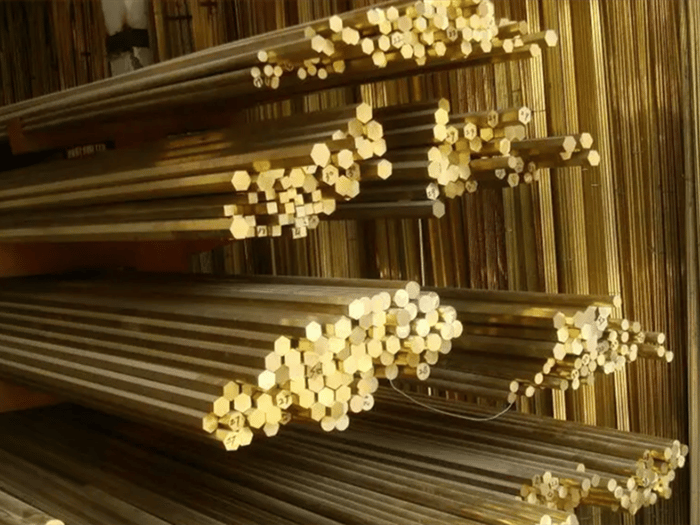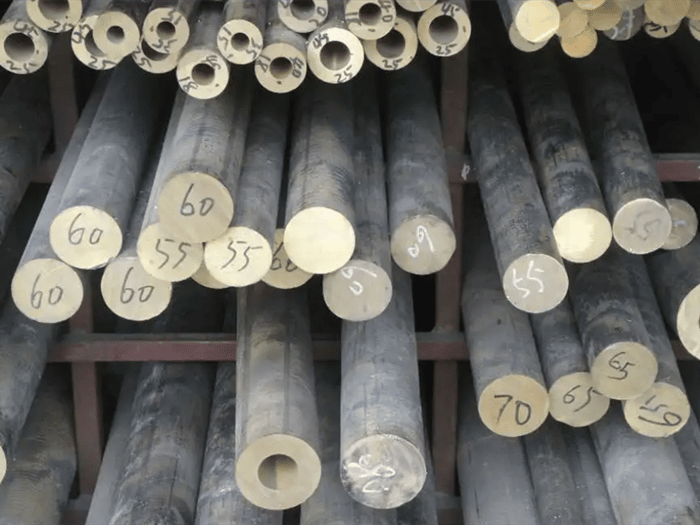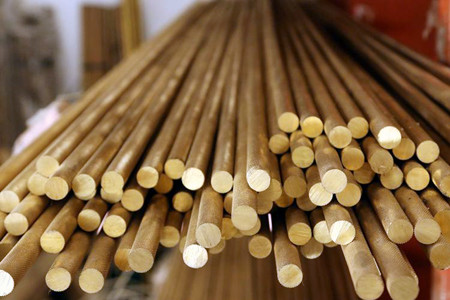Copper alloys are formed when certain alloying elements (such as zinc, tin, aluminum, beryllium, manganese, silicon, nickel, phosphorus, etc.) are added to pure copper. Copper alloy has good electrical conductivity, thermal conductivity and corrosion resistance, as well as high strength and wear resistance. Brass and bronze are the commonly used copper alloy whether you’re a designer or a hobbyist, it’s likely that you’ve wondered which metal is better, copper brass or bronze.
What’s Copper Brass?

Brass is a very durable material that can be used in a variety of settings, including plumbing fixtures. Brass is also a good conductor of heat and resists corrosion when exposed to salt water, making it particularly useful in heat exchangers and radiators. Its strength and corrosion resistance makes it an excellent choice for architectural applications. As a result, brass has been used in the restoration of many historic buildings around the world.
Brass also has a rich history of being used in hand tools. It is also used extensively in the construction of musical instruments. And it is a popular substitute for copper in making jewelry. Because of its low melting point and workability, brass can be easily shaped by hand or by using modern milling or turning machines. This property allows it to be used in a variety of products, from architectural trim pieces to wind musical instruments.
One of the most desirable qualities of brass is its corrosion resistance, has been used in many applications that require corrosion resistance and low friction. Another advantage of brass is that it is antimicrobial. It kills harmful microorganisms on its surface within minutes or hours. Regularly cleaned brass can kill 99.9% of disease-causing bacteria in as little as two hours. Although corrosion is known to reduce the life of metals, brass does not corrode even in the most corrosive water. Other benefits of brass include its easy moldability and machining and its aesthetic qualities. This combination creates an unusual combination of properties that makes it both strong and ductile. Many high-strength alloys lack these qualities, so brass has some advantages over other metals.
What’s Bronze?

Tin bronze is a copper-based alloy with tin as the main alloying element called tin bronze. The tin content of industrial tin bronze is mostly between 3% and 14%. Tin bronze with a tin content of less than 5% is suitable for cold processing. Tin bronze with a tin content of 5% ~ 7% is suitable for hot working; Tin bronze with a tin content greater than 10% is suitable for casting. Tin bronze is widely used in shipbuilding, chemical industry, machinery, instrument and other industries. It is mainly used to manufacture wear-resistant parts such as bearings and bushing, elastic elements such as springs, corrosion resistance and magnetic resistance parts.
Aluminum bronze is a copper-based alloy with aluminum as the main alloying element called aluminum bronze. Aluminum bronze with aluminum content between 5% and 12% has the best plasticity and is suitable for cold working. When the aluminum content is greater than 7% ~ 8%, the strength increases, but the plasticity decreases sharply, so it is mostly used in the cast state or after hot working. The mechanical properties of aluminum bronze are higher than those of brass and tin bronze. Aluminum bronze has higher wear resistance and corrosion resistance in atmosphere, seawater, and most organic acids than brass and tin-bronze and can be used to manufacture high-strength anti-wear parts such as gears, bushings and worm gears as well AS elastic elements WITH high Corrosion resistance.
Beryllium bronze is a copper alloy with beryllium as the basic element, called beryllium bronze, with a beryllium content of 1.7% ~ 2.5%. Beryllium bronze has extremely high elastic and fatigue limits, excellent wear resistance, corrosion resistance, and electrical and thermal conductivity, and has the advantages of being non-magnetic and not sparking when impacted. Beryllium bronze is mainly used to make important springs for precision instruments, clock gears, bearings and bushings working at high speed and pressure, electrodes for electric welders, explosion-proof tools, navigational compass and other parts. A bronze alloy known as bismuth bronze contains 52 parts copper, 30 parts nickel, 12 parts zinc, and five parts lead. This alloy is often used for light reflectors and can resist a high polish.
How To Distinguish Brass And Bronze?
While both brass and bronze are made from the same elements, brass has a slightly yellower color and is higher in zinc than bronze. Bronze gets its name from its blue-cyan color, and brass gets its name from its golden color. you can distinguish them basically or roughly from the color. further distinction should also make metallographic analysis. While both metals are made primarily from copper, brass is worth more because it has a higher percentage of copper than bronze.
What’s more, we tell them by the price, because brass is cheaper than bronze. Generally, brass is a more affordable material than bronze. Bronze is rarely used in industry applications except some bearing bush (sleeve), seal and other parts. Brass is generally used because bronze is not as good as brass in mechanical properties. This property makes brass a good choice for decorative components and metal pieces that people touch often. It is also better suited for applications that require low friction and corrosion resistance. Bronze, on the other hand, is the best choice for tools that will be exposed to harsh environmental conditions such as marine environments.







